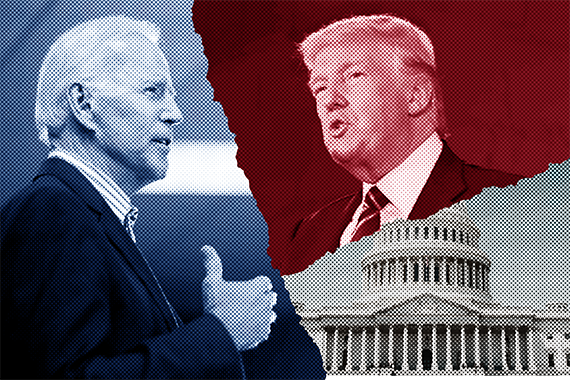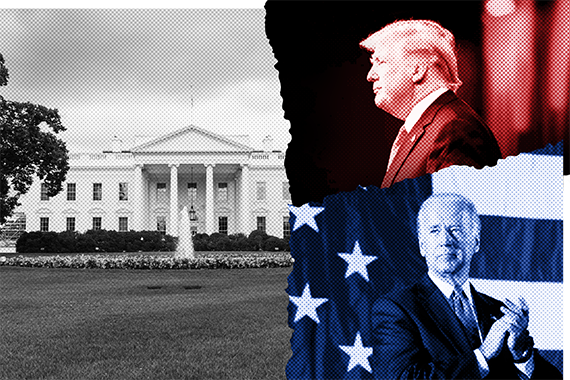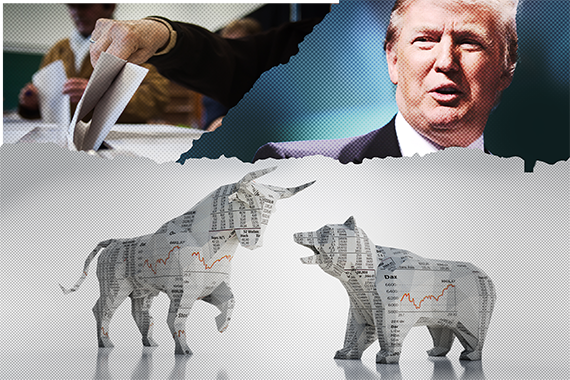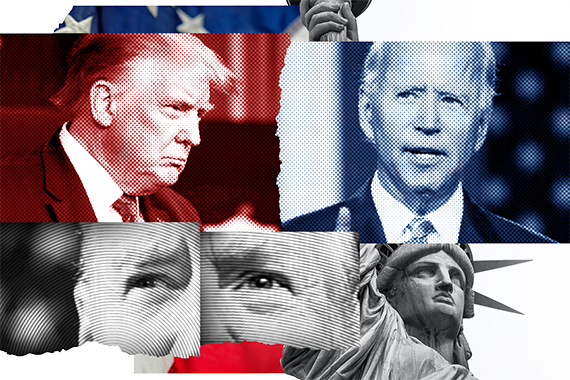Last debate didn’t move needle for Trump
Both candidates gave improved performances at the last Presidential debate, notably President Trump, who delivered a much improved and polite performance.

26th October 2020
Arguably though, the only slip-up that Mr Biden made was his oil comments near the end, which had the Democrat machine scrambling to correct perceptions that Biden would ban fracking and reduce oil production, none of which would play well in a number of key swing states.
Like the Vice-Presidential debate, Mr Biden has such a commanding lead in the polls, that a draw would still be an effective win for the former Vice-President. Mr Biden’s job was, therefore, to turn up, but not slip up. In this respect, it was mission accomplished despite his oil faux pas and my impression is that President Trump may have just edged him. Mr Biden’s national polling has shrunk, but not by much. More importantly for the Democrats, polling in the crucial swing states that will deliver the election victory to either candidate wavered but didn’t radically alter.
Covid-19 and the economy continue to be the two crucial issues on which the election is being fought. With Covid-19 cases spiking to over 80,000 per day across the United States, President Trump is fighting a rear-guard battle. Simply stating that the spike in cases is because there is now more testing is self-defeating, it implies that testing was inadequate in the first place. Unsurprisingly, both former President Obama and former Vice-President Biden are making hay on the campaign trail with it. Another potential Republican speedbump comes in the form of Vice-President Pence, whose closest advisor has tested positive for Covid-19. At this stage, the VP is not self-isolating and has a full week of campaigning ahead.
With the election set to be won or lost in 12 key swing states, it is unsurprising that party heavyweights from both sides are heading to Florida, Ohio, Pennsylvania and North Carolina amongst others this week. President Trump and Vice-President Pence, as well as former Vice-President Biden and former President Obama are all hitting the road in key swing states this week as we head into the last eight days of the election.
With Biden bound for the White House, how will you trade?
Already have a live trading account? It is easy to fund your account using one of the following payment methods






Polling narrows as early voting shatters records
National polls collated on www.realclearpolitics.com and www.fivethirtyeight.com suggest that Mr Biden’s lead over President Trump narrowed after the Presidential debate last Thursday. FiveThirtyEight’s collated polling shows Mr Biden’s lead narrowed at a national level to 9.2% this week. RealClearPolitics has Mr Biden’s lead narrowing slightly to 8.1%. Despite narrowing, with more likely to come as the election draws ever closer, the national polls still represent a commanding lead for President Trump to overcome.
The swing states, of course, hold the key. In Texas, Trump’s lead has shrunk to 0.50% as of October 21st according to FiveThirtyEight. Notably, over 6.8 million votes have already been cast early, the highest in the country, just ahead of California. In Florida, another treasure-trove of electoral college votes, the election remains too close to call, with the latest poll suggesting Biden leads Trump by 2.4%. Notably, President Trump voted early on Saturday in Florida. Ironic given his avowed distaste for the alleged perils of mail-in and early voting.
FiveThirtyEight suggests that Biden leads by 2.6% in North Carolina, with Trump ahead by 1.0% in Ohio, and Biden ahead by just 0.3% in Georgia and 3.0% in Arizona. In Pennsylvania, the scene of much heavyweight campaigning, Biden’s oil slipup appears to have not upset his lead, which holds steady at 5.1%.
Texas, Florida, North Carolina, Georgia and Ohio remain within the margins of error for polling, and in 2016, the polls turned out to be wrong. Realistically President Trump must win all of these states to win 270 electoral college votes, and overcome material leads by Biden in Pennsylvania and Arizona in particular.
One factor that may yet play its part is early voting, which was touched on above. According to the US Elections Project, over 56 million people have already voted in the US election. By my reckoning that’s over 30% of the total electorate. Given these levels, it may be much harder for the candidates on either side to move the needle on polling even with eight days still to go. One can assume that the 56 million votes will also increase over this week.
The biggest risk factor in this election is a disputed one. There are literally hundreds of court cases pending at a state level by both sides on how early votes will be treated, with some judgements already decided at a Supreme Court level. The unholy rush to inaugurate Amy Coney Barrett to her Supreme Court Chair has as much to do with this, as does Republican largesse. It does suggest that an aggressive rear-guard battle will be fought on this front by Republicans if the votes in the swing states lead to a contested election. That is likely to cause much market uncertainty, particularly if the matter drags on into mid-November, and is unlikely to be positive for equity markets.
Don’t forget the Senate
Once again, I will re-emphasise that although the presidential elections are the headline act, the real race is for the US Senate. RCP has the Republicans on 46 seats and the Democrats on 45 seats. Nine seats are a toss-up, meaning either party could win control. Financial markets have priced in a “blue wave” clean sweep, and a victory for the Republicans could see much of that trade unwound. Add in the potential for drawn out contested results, as mentioned above, and the election still holds much potential volatility, even if the Presidential race looks to be a done deal. Arguably though, a Biden Presidency and a Republican Senate could be the most market friendly result for the status quo in the medium-term.
Jeffrey Halley
Senior Market Analyst, Asia Pacific, OANDA
Jeffrey has three decades of financial market experience. Before joining OANDA, Jeffrey was Director of Trading at Saxo Capital Markets in Singapore. At OANDA, he provides approachable macro analysis of various asset classes with a typically Kiwi viewpoint aimed at demystifying the financial markets for the many, and not the few. Jeffrey holds an MBA from the Cass Business School, and is a regular guest with Bloomberg, BBC, Reuters and Channel NewsAsia.
Exclusive to OANDA

Early numbers bode well for Democrats

Gap widens as Trump’s options narrow

Trump diagnosis creates uncertainty
